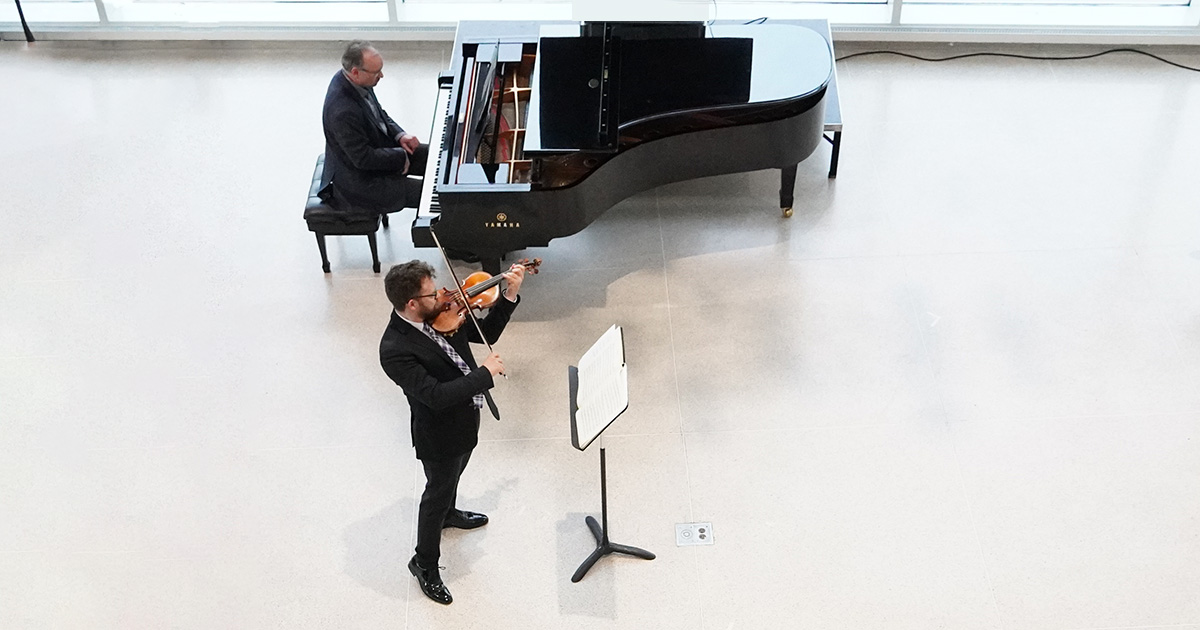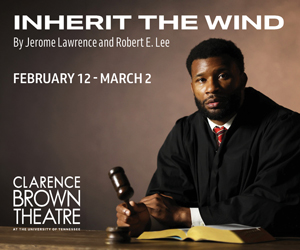BY DIANA SALESKY
“Somewhere in Time”— Knoxville Symphony Orchestra – Concertmaster Series
William Shaub, violin; Kevin Class, piano; Rachel Loseke, violin;
Katy Gawne, viola; Andy Bryenton, cello
Knoxville Museum of Art
Wednesday and Thursday, October 4 and 5—7:00 PM
Tickets and Information
When asked about his philosophy on selecting music for a recital, KSO Concertmaster William Shaub offered up 10 tips. I decided to see how closely Shaub follows his own advice by comparing his 10-point checklist against the repertoire he selected for his first Concertmaster Series program of the 23-24 season. His upcoming concert will feature:
Henri Wieniawski: Polonaise
John Barry: Somewhere in Time
Traditional: Danny Boy
Paul Frucht: What a Time
Johannes Brahms: Piano Quintet in F Minor, Op. 34
So, let’s see how Shaub fares against his own rules.
- Give your recital a title or theme. Shaub dubbed this performance “Somewhere in Time,” an obvious nod to movie-composer John Barry’s gorgeous song of the same name and a subtle nod to Paul Frucht’s violin and piano composition titled What a Time. So far, so good.
- Balance “audience favorites” with lesser-known pieces. There’s no bigger audience favorite than Danny Boy. And this will be the premiere of Frucht’s newly-released violin and piano version of What a Time (the original was written for cello and piano). This juxtaposition of familiar and new creates the balance Shaub likes to strike. Check.
- Don’t be afraid to take some risks. The Brahms Piano Quintet in F Minor is an absolute tour de force and certainly poses a risk in that it requires an ensemble with both technical virtuosity and laser-sharp rhythm. Originally scored for a string quartet, famed violin virtuoso Joseph Joachim told young Brahms the piece was simply too weighty for four string players. It then morphed into a sonata for two pianos, upon which pianist Clara Schumann also weighed in with criticism. Brahms went back to the drawing board once again and the resulting piano quintet became a mainstay of the chamber music repertoire. It’s a risk, no doubt, but one well worth taking. Point, Shaub.
- Add in virtuosic pieces. Wieniawski’s rip-roaring Polonaise is on the program. Mission accomplished. I’ll say no more.
- Program music by diverse composers across all time periods. We’re going from German-born Brahms and Polish-born Wieniawski (1833 and 1835, respectively), to British-born Barry (1933), to American-born Frucht (1989). Gotta give it to Shaub on this one.
- Find ways to surprise your audience. One welcome surprise will be the attendance of composer Paul Frucht, who will introduce his post-pandemic work that musically illustrates the struggle between hopeful optimism for the future and residual tragedy about the past. The surprise for some audience members may be just how much it means to hear directly from the composer what inspired and motivated him to write the piece.
- Speak directly to your audience, when possible. Not only can we look forward to hearing Shaub speak, as mentioned we will also hear from Frucht. Check and check.
- Tie in other arts to the works you’re performing. Well, the recital is being held at the Knoxville Museum of Art, so I think I’ve got to give Shaub a checkmark here.
- Take into account your personal emotional stamina. Here’s where Shaub may not have taken his own advice. This program is going to be a physical and mental workout! But any great musician is also an athlete of sorts, so I’m betting Shaub has been working on his endurance as much as his scales. Since Shaub never disappoints, I’m going with a check here.
- Search for memorability. At the end of the evening, what most performers would hope is that the music is still swimming around in your brain – that the emotions the music evoked are raw and at the surface. I predict Shaub’s rendition of Somewhere in Time will produce one of those moments we all remember for a very, very long time.






